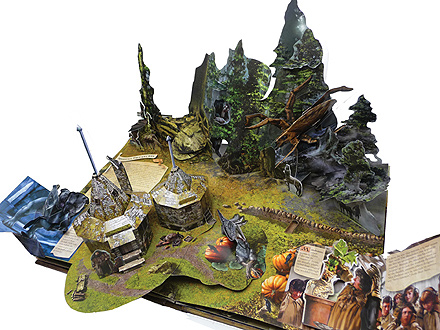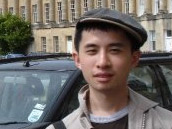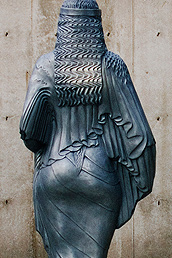Enchanted
In conversation with Bruce Foster, paper engineer.
Tom Ue: Tell us a bit about the making of the sequence in Enchanted, which featured a book with two pop-up pages of a castle and of the evil queen in her room as she glances out at the prince with his servant. Was a physical book made for the film?
Bruce Forster: Yes, but only up to a point. Kevin Lima, the director, wanted to open the movie with a real pop-up book. But to his credit, he wanted it to be genuine, not a “made up” cgi book. So I designed and built the white paper dummies for the three opening pop-ups so that they had a model. It was important to capture the physicality of paper as well. In pop-ups, sometimes the layers of paper push against each other to encourage the pop to unfold. The computer animators had to work at duplicating those physics, unlike cgi “pops” that exist in an absolute world of zero thick planes, but no volume or texture. Once I provided the models, the art was added digitally by Lisa Keene, the art director for these sequences. Then WETA in New Zealand provided the animation. Once this sequence was finished, Kevin was so pleased with the effect that he decided to also close the movie with pop-ups. But unlike the opening, these last dozen or so scenes in the movie had already been filmed or animated. So we had to study the various scenes and identify the sweet spot in each that would be able to collapse or rise as a pop-up (depending on its sequence). This was in a way much more difficult than beginning from scratch since in order to translate some of these into pop-ups, we had to deal with the issues of elements that break the frame. For instance, the skyscraper tower had to be contained within the frame of the movie as it collapsed.
T.U.: Beauty and the Beast famously used glass windows for a framing narrative. Is the use of a pop-up book more complex?
B.F.: Yes, in the sense that it has the extra stages of form and action that have to be developed first. Once those decisions were accomplished, it became another illustration task, like those stained glass windows.
T.U.: Are there actual limits to what can be done with a pop-up book?
B.F.: Absolutely. Paper has its limitations in reality; pop-ups have certain “rules” of physics. Angles have to be conducive to popping. The geometries of the structure mean that one angle in a pop will directly influence the others. One of the challenges of keeping pop-ups fresh is finding new ways to seemingly break those rules. Also, pop-ups must be durable and collapse so that the elements remain inside a closed book. So often I see computer generated “pop-ups” that defy reality. Elements stand or spring into life with no basis in actual physics. Buildings arrange themselves in myriad directions, sometimes crowding right up to the edge of the paper. In a real book, those walls have to tuck in somehow and the physics of our reality are not forgiving, unlike the computer world.
T.U.: One important difference between reading the pop-up book and seeing it onscreen is the amount of time that we get to read the details. A related one is Alan Menken’s musical score. How important is time to pop-up books?
B.F.: Interesting question. I believe time is very important in a pop-up book. A sequence may only take a few sections, but there is a sequence of action, a ballet of angles and forms that must be experienced to fully appreciate. While the sequences in Enchanted were successful as onscreen animation, an actual book allows one to savor the moment and extend it so that one can appreciate the details.
T.U.: What other ways do you see reading a pop-up book onscreen been different?
B.F.: You don’t get to experience the tactile elements and most importantly, the magic of having an object unfold and grow inside your own three-dimensional space.
T.U.: Is watching an animation more similar to reading a pop-up book than we might imagine?
B.F.: With deference to how cool it was to see these pops on the big screen, there is a great deal that is missed by watching a pop-up unfold on the big screen or behind a glass plane as in the case of a computer or Ipad screen. So far I’ve been unimpressed with attempts to bring pop-ups to the e-book world. Movables, which are one type of paper engineering that makes things move flatly by manipulating a tab, are in a way, a translation of animation back to the world of paper, are thus naturally suited to electronic media. But volume pops? Not until 3-D is better perfected and/or 3-D holograms are a reality.











